7 Best Photo Scanner To Digital
The ravages of time always eat away at images and documents. After many years, the colors and writing fade, yellowing paper or even unsightly stains appear on it. There is the best photo scanner to maintain the quality of your personal souvenir photos and important documents. Which variant you choose ultimately depends on the type of image you want to digitize. There is a photo scanner for paper photos and documents, but also for slides, film, and negatives.
In a product comparison, we present 7 of the best photo scanners from various manufacturers and discuss the advantages and disadvantages of each model. In addition, our guide provides you with all the essential information so that you are well versed in the subject of photo scanners after reading them.
7 Best photo scanners in big comparison
1. Somikon 3-in-1 Photo Scanner
- Media type photos
- Scanner type photo, film
- USB connectivity technology
- Dimensions of the item W x W x H 20.9 x 18.2 x 16.2 centimeters
- 3200 . resolution
- Item weight 1050 grams
The standalone photo scanner from Somikon is a handy 3-in-1 device that scans and digitizes slides and even negatives in addition to photos. What is the difference between slide and negative is explained here. You'll find a stand specifically designed for this in the accessory, which you can insert into the scanner. Simply insert your slides and negatives and slide the mount into the unit. For photo scanning, place the photo scanner on the image and it will capture up to 15 images in 1 minute. Images are transferred via a USB cable that you connect to your laptop or PC.
The photo scanner has a high resolution sensor with 14 megapixels, which promises good image quality for your digital images. In addition to photo scanner including slide holder, shipping coverage includes negative holder, base plate with photo holder, battery, USB power supply unit, USB cable, cleaning brush, and instructions for use.
What can I use a photo scanner for? With a photo scanner, you can digitize analog photos and thus maintain their quality in the long run. The alternative is to take pictures with the camera, which, however, results in much lower image quality. Many photo scanners also have a function to scan slides and negatives. However, this should be specifically stated by the manufacturer.
Advantages
- Scan photos, slides and negatives
- High scan quality for movies (3,200 dpi)
- High scanning speed (15 images per minute)
- Battery operation (mobile use)
- With display (intuitive control)
- Cleaning brush included
- Holder for slides, negative film and photos included
Deficiency
- Not scanning documents
- Low scan quality for photos (700 dpi)
- Battery operation (limited life)
2. Plustek ePhoto Z300 Photo Scanner
- Media type photos
- Scanner type photo
- Series 271
- USB connectivity technology
- Dimensions of the item W x W x H 28.9 x 16 x 15.8 centimeters
- Resolution 300dpi/ 600dpi
- Item weight 1.4 kilograms
- 18 Watt
- Sayfa Boyutu 210x297
The Plustek ePhoto Z300 is a feed scanner with intuitive operation that does not require any buttons. When you insert a picture, the scanner automatically pulls it in without you having to press a button. You also don't need to do any formatting. So that you can immediately edit your digital recordings, the manufacturer provides the appropriate software for you. This model has automatic image adjustment so the colors are their own.
But not only photos, but also various kinds of documents such as receipts, recipes and others can be scanned and saved up to A4 format with this device. All you need for connection is a USB cable which is also included in the shipping scope. This device is compatible with Windows and Mac OS. Even if you have little space, the ultra-light and compact photo scanner from Plustek is a good choice.
Important product data at a glance:
- Keyless sheetfed scanner
- With image processing software for automatic image processing
- Automatic cutting, automatic rotation when tilting
- Special roller system for smooth image transport
- Batch processing of up to ten images is possible
- Scan photos and images and various types of documents
Are you short on space on your desk? Photo scanners tend to be very compact, so they don't take up much space on your desk or in your office. With dimensions of 28.9 x 1.6 x 15.8 centimeters, the feed scanner from Plustek is also a device that you can place anywhere without any problems and not bother you. We will tell you more about the advantages of photo scanners in our detailed guide.
Advantages
- Auto indent
- Scan photos and documents (A4 and smaller)
- High scanning speed (30 images per minute)
- Cable operation (unlimited usage time)
- Cleaning brush included
Deficiency
- Does not scan slides and negatives
- Low scan quality for photos (600 dpi)
- No information about scan quality for movies
- Wired operation (cannot be used cellularly)
- No screen
3. Rollei PDF-S 240 SE Photo Scanner
- Negative media type
- Scanner type film
- Model name PDF-S 240 SE
- USB connectivity technology
- Dimensions of the item W x W x H 14.7 x 20.8 x 22 centimeters
- Resolution 2400, 1800dpi
- Item weight 890 grams
The Rollei PDF-S 240 SE photo scanner is perfect for photos, slides and negatives. Just insert the SD card into the memory card slot and start scanning your recordings. This way you don't need a computer. However, if you prefer to connect your device to your PC for scanning, this is also possible with the included USB cable to the USB port.
Delivery scope includes multi-scanner, slide mount, 4-in-1 mount for photos, USB cable, USB power adapter, image processing software, and instructions. This device is compatible with common Windows operating systems such as ME, 2000, XP or Vista 7 as well as with iOS. The Rollei photo scanner also supports a high resolution of 2,400 dpi with 24-bit color depth.
What do the abbreviations dpi and the terms color depth mean? dpi stands for "dots per inch" and defines the density of dots per inch or per inch. 1 inch is about 2.54 centimeters. For photos, dots per inch must be at least 600. The rule applies: the higher, the better. Color depth is the range of color gradation and brightness in an image. 24 bit color depth ensures optimal image quality. This is the closest value to human color vision.
Advantages
- Large color screen (6.1 centimeters, intuitive controls)
- Scan photos, slides and negatives
- High scan quality for photos (2,400 dpi)
- High scan quality for movies (2400 dpi)
- Cable operation (unlimited usage time)
- Holder for slides, negative film and photos included
Deficiency
- Not scanning documents
- Slow scanning speed (Six images per minute)
- Wired operation (cannot be used cellularly)
- Cleaning brush not included
4. Epson Perfection V600 Photo Scanner
- Media type photos
- Scanner type photo
- V600 Perfection Series Photos
- USB 2.0 type B konektivitas connectivity technology
- Dimensions of the item W x W x H 28 x 48.5 x 11.8 centimeters
- Resolution 50~6400 (1 dpi step), 9600, 12800 dpi
- Item weight 4 kg
- Watts 16.5 watts
- 48.0 . color depth
This Epson flatbed scanner is suitable for photos as well as negatives and slides. You can easily scan images in various sizes and formats with it and with a resolution of 6,400 dpi. With the push of a button, thanks to ICE technology, you have the option to automatically remove dust, hair and other fine debris, as well as scratches and fingerprints.
The Epson Perfection V600 photo scanner is compatible with operating systems Mac OS, 10.5.8 or higher, Windows 10, Windows 7, Windows 8, Windows Vista and Windows XP. It has a resizeable preview window where you can check every detail of your image. With the integrated image processing software Epson Easy Photo Fix, you can optimize color, brightness and contrast. Apart from JPG, you can choose from a variety of formats such as TIFF, BMP, multi-TIFF or PDF to save your recordings.
What makes Epson special? Seiko Epson Corporation is a Japanese company with many years of experience in the photo scanner field. It is one of the world's largest manufacturers of digital cameras, scanners, printers, projectors, industrial robots and LCD components.
Advantages
- Scan photos, documents, slides, and negatives (A4 and smaller)
- High scan quality for photos (6,400 dpi)
- High scan quality for movies (6400 dpi)
- Cable operation (unlimited usage time)
- Holder for slides and photos included
Deficiency
- Slow scanning speed (6.5 images per minute)
- Wired operation (cannot be used cellularly)
- Cleaning brush not included
- No screen
5. Rollei DF-S 310 SE Photo Scanner
- Foil media type, negative
- Scanner type film
- Model name DF-S 310 SE
- USB connectivity technology
- Dimensions of the item W x W x H 9.1 x 10.4 x 10.5 centimeters
- Item Weight 0.28 Kilogram
The Rollei DF-S 310 SE photo scanner makes it possible to scan and digitize slides and negatives. Also included with this special edition are inserts for Super 8 film and pocket film strips. If you want to learn more about the Super 8 movie, you'll find it here. The photo scanner scans up to 20 slides per minute. The 2.4-inch TFT color monitor offers preview functionality and should allow for fast viewing and scanning.
The Rollei photo scanner has a multi-part precision lens with a resolution of 14 megapixels. If necessary, the resolution can be interpolated up to 24 megapixels. This will make the smallest details visible on the slide and film negatives. Single-pass image acquisition with a break point should ensure proper positioning.
The photo scanner has 128 megabytes of internal memory and is equipped with a card slot for SD and SDHC memory cards with capacities up to 32 gigabytes. This will allow slides, negatives, and films to be scanned and saved separately from the computer. The photo scanner is compatible with Windows from version 2000 and MacOS from version 10.4. Power is supplied via the USB port or 5 volt adapter.
This device allows automatic and manual control of color balance and exposure. Can be connected to a TV with an AV cable or jack plug for viewing live images on the big screen.
How high is the photo scanner quality from Rollei? The German company Rollei GmbH was founded in 1920. It developed the legendary twin-lens reflex camera and is still one of the leading manufacturers in the field of professional photography. Over time, Rollei has also specialized in compact cuboid photo scanners and seems to supply high quality products in this area.
Advantages
- Scan photos, slides and negatives
- High scan quality for photos (3,600 dpi)
- High scan quality for movies (3,600 dpi)
- High scanning speed (20 images per minute)
- With display (intuitive control)
- Cable operation (unlimited usage time)
- Cleaning brush included
- Holder for slides, negative film, Super 8 film and photos included
- Light (276 grams)
- TV connection
Deficiency
- Not scanning documents
- Wired operation (cannot be used cellularly)
6. Epson FastPhoto FF-680W Photo Scanner
- Media type photos
- Scanner type photo
- FastPhoto FF-680W Series
- USB connectivity technology
- Dimensions of the item W x W x H 29.7 x 17 x 17.5 centimeters
- Resolution 300, 600dpi
- Item weight 8.16 pounds
- 17 watts
- Sayfa Boyutu A4
The Epson FastPhoto FF-680W photo scanner is a WLAN scanner that, according to Epson, can quickly digitize photos thanks to its automatic fast feed (100 sheets / 36 sheets of photo paper). It creates up to 30 photos in just 30 seconds. The model scans at a maximum resolution of 600 dpi and is suitable for a variety of formats and sizes, including standard photos, square photos, panoramic photos, and instant photos from 9 x 13 to 21 x 91 centimeters. According to Epson, the scanner can recognize when the front and back are about to be scanned and thus automatically capture handwritten notes on the back of a photo, for example. Depending on the purpose, the photo scanner creates JPEGs for sharing or large TIFF files for high image quality.
With automatic image optimization: The Epson FastFoto FF-680W photo scanner not only offers the option to edit photos manually, but also has a number of automatic functions that optimize photos immediately and prepare them for distribution. This includes cropping, rotating, and restoring colors in faded photos, as well as changing brightness, contrast, and color, according to Epson. According to the manufacturer, it is possible to keep an optimized and original version of the scan.
According to Epson, photo scanners can process more than just photos: They are perfect, for example, for archiving one- or two-sided documents at a speed of 45 pages per minute, vertically up to DIN A4. Panoramic images can also be processed and thanks to OCR software scanned documents can be edited in Word and Excel and saved as PDF. According to Epson, the FastPhoto software, which gives the scanner its name, allows images to be forwarded via email or automatically uploaded to cloud services like Dropbox or Google Drive.
Does a high dpi value always automatically mean high scan quality? Resolution is not the only criterion for good scan quality. If the scanner has high-quality optics, it can digitize sharp, colorful images at a resolution of 600 dpi. However, resolution is an important factor if you want to greatly enlarge your footage. Then a resolution of at least 1,000 dpi makes sense.
Advantages
- Fast scan (30 photos in just 30 seconds)
- Automatic image optimization
- Duplex scanning
- Epson ScanSmart and Epson FastPhoto (software package)
- Document archiving possible
Deficiency
- Relatively low scan quality (600 dpi)
- No views available
7. Epson Perfection V39 Photo Scanner
- Media type photos
- Flatbed scanner type scanner
- USB connectivity technology
- Dimensions of the item W x W x H 24.9 x 36.4 x 3.9 centimeters
- Resolution 4800x4800dpi
- Item weight 1500 grams
- 2.5 Watt
- Sayfa Boyutu A4
The Epson Perfection V39 is a space-saving flatbed scanner that scans your photos and documents in seconds. It delivers an excellent resolution of 4,800 dpi and an equally impressive color depth of 24 bits. Just connect it to your PC via the USB port and you can start digitizing your pictures right away, as the device doesn't need to warm up.
You can then save your images and documents online and make them available to others. Scan directly to the cloud or to Facebook. Epson's photo scanner also includes editing software that you can use to further enhance the appearance of your images. The software removes dust, refreshes faded colors and improves background lighting.
You can also upgrade documents with the integrated software. You can sharpen text and remove unwanted appearance of text and images in two-sided documents. The scope of delivery includes a photo scanner, CD with drivers and utilities, USB cable, user manual and warranty documents. The built-in stand allows you to place the scanner flat or at an angle to save space on your desk.
What are the advantages of a flatbed scanner? On the one hand they have a very compact design and on the other hand they are versatile. You can scan photos as well as documents, book pages, and more. In our guide, we go into detail about the different types of photo scanners and also present flatbed scanners in more detail.
Advantages
- Feet (space-saving installation)
- Scan photos, documents, slides, and negatives (A4 and smaller)
- High scan quality for photos (4800 dpi)
- High scan quality for movies (4,800 dpi)
- High scanning speed (29 images per minute)
- Cable operation (unlimited usage time)
Deficiency
- Wired operation (cannot be used cellularly)
- Cleaning brush not included
- No space for included slides, negatives, or photos
- No screen
What is a photo scanner?
With a photo scanner, you can scan and save negatives and slides. With a flatbed scanner, you even get a multifunctional device that can be used to digitize various types of photos and documents. They work in a similar way to a photocopier. Some flat-screen scanners also have a transparency unit that can also be used to scan slides and negatives in 35mm format. But some other types of photo scanners also have a feeder for scanning paper photos.
What are the advantages of a photo scanner over taking photos?
If you want to do without a photo scanner and prefer to take your photos with a digital camera or cell phone, you should be aware of the following issues:
- Reflection occurs which can seriously damage the quality of your digital images.
- There may be some distortion if the photo is slightly bent.
- The right perspective is also difficult to find when shooting, so the proportions are not distorted.
- It could be that the edges of the analog image don't fit into the digital photo frame.
When should you buy a photo scanner and when should your photos be scanned by an external service provider?
If you only want to scan photos, slides, or negatives from time to time, you can turn them over to an external service provider for a relatively low fee. They take over image processing and optimize your images at a high level. However, for frequently scanning large numbers of images, a photo scanner is a reasonable investment. But you have to remember that sorting and dusting, scanning and editing images will take a lot of time. If you don't have much time, an external service provider may be the best fit for larger scan orders. The price is sometimes not as high as expected. In any case, it is worth comparing prices from different providers carefully.
What types of photo scanners are there?
If you want to digitize your own images, you have many photo scanner options. There are the following types of models:
- Multifunction scanner
- Flatbed scanner
- Scanner with feeder
- Mobile scanner
- Portable scanner
Different devices differ both in appearance and in size and functionality. We will now discuss in more detail the advantages and disadvantages of each model.
Multifunction scanner
As the name suggests, the multifunction scanner fulfills several tasks. With this device you have the possibility to digitize documents as well as photos, negatives and slides. The multifunction scanner functions the same as a flatbed scanner with an integrated transparency unit. You place your recording or document face down on a glass plate and press a button which starts the scanning process.
When scanning photos, the multi-function scanner has the disadvantage that tinting errors can occur because the light sensor is only changed to three primary colors. The resolution, on the other hand, is quite high, so you can zoom in on your images digitally and the image quality doesn't degrade. If you want to digitize a large number of images, a multifunction scanner may not be the right device for you, as you have to place each image individually on a glass plate. In terms of operation, the multifunction scanner is easy to use. Images are always captured optimally including the edges.
Advantages
- Great for documents, photos, slides and negatives
- High resolution
- Easy to use
- All pictures taken
- Excellent value for money?
Deficiency
- Scanning takes a lot of time
- Sometimes mistakes in coloring
- Exposure can't be controlled
- Optical quality is not always ideal in depth of field
Flatbed scanner
As with multifunction scanners, with a flatbed scanner you also place your image face down on the glass plate and start the scanning process. As with multifunction scanners, tinting errors can occur from time to time, as flatbed scanners are also only divided into three primary colors. Unlike a multifunction scanner, you cannot digitize slides and negatives other than photos and documents. However, with many flatbed scanners, you have the option of attaching a transparency attachment.
Scan roll film to a flatbed scanner: They are not specifically designed for this, but roll film can be scanned with any flatbed scanner. Negatives can be turned into positives on the computer.
Advantages
- All pictures taken
- Easy handling
- Can also be used for documents with separate transparency attachments
- Good value for money?
Deficiency
- Scanning takes a lot of time
- Sometimes mistakes in coloring
- Exposure can't be controlled
- Optical quality is not always ideal in depth of field
What is the difference between a regular flatbed scanner and a photo flatbed scanner? Conventional flatbed scanners are also often referred to as photo scanners. The defining difference between a photo flatbed scanner and a normal flatbed scanner is a higher quality sensor, better color depth and higher resolution.
Scanner with feeder
You can use the feeder scanner for photos and documents. To scan, you simply place your image in the feeder and the device automatically moves the image inward via the rollers on the scanning sensor. It works in a similar way to a fax machine. However, because the feeder scanner was originally designed as a document scanner for paper documents with a rough surface, photos may have the problem that the smooth surface is shifted in the feeder and the image becomes blurred.
Operating the feeder scanner is very simple and captures the entire image. However, if you want to scan multiple images, you will need to take a lot of time with this type of photo scanner, as you will have to digitize each image individually.
Advantages
- Also suitable for documents
- Easy handling
Deficiency
- Smooth photos can shift when feeding
- Errors in color coverage may occur due to low light sensitivity
- Low resolution
- Old scanner only accepts A4 documents
- High time expenditure, as each image can only be scanned one at a time
Mobile scanner
With a mobile photo scanner or photo scanner app, you don't have to worry about the power supply, as these variants are integrated directly into your phone or tablet. All you have to do is press the shutter button on your smartphone or tablet camera and the captured image will be digitized automatically. A special recording process minimizes reflections. Some applications can also correct the wrong perspective.
Problems can arise if the photo you want to photograph is curved. Then the mobile photo scanner may not recognize the edges properly and the edges of your digital image are cropped. The image resolution of the digital image is also not outstanding. If you do not have very high quality demands, it is sufficient for personal use. You can download a mobile photo scanner either for free or for a small fee.
Advantages
- Often available for free
- Always at hand
- Easy to handle
- Live editing and filter apps possible with other apps
Deficiency
- Mediocre resolution
- The bent edges of the photo are not recognized properly
- Functions depend on smartphone or tablet battery
Portable scanner
The portable scanner is a pen-shaped device with a light sensor on the bottom. You scan your image by running the stylus over your photo. The downside is that slight camera shake can affect the sharpness of the digital image. This scanner is ideal for quick and convenient transportation, as it is light and very compact.
Advantages
- Light and practical
- Also suitable for documents
Deficiency
- Camera shake is possible due to manual scanning
- Care is required when scanning, resulting in complicated handling
- Takes a lot of time
Where can I buy a photo scanner?
You can buy photo scanners at electronics stores and supermarkets, as well as on the Internet. Just download the mobile photo scanner from the Android and Apple app stores. When buying online, read the reviews of each device carefully to ensure the quality meets your expectations.
What about the return policy for photo scanners? Unfortunately, you won't get your money back at all electronics stores if you don't like the photo scanner after you buy it. Therefore, you should inquire in advance about the respective return rights. Some markets only offer vouchers instead of right of return. You should also inquire about the respective regulations at the online store.
How much does a photo scanner cost?
There are photo scanners in all price ranges. How much money you spend on your future device depends a lot on what you expect from the digital picture quality. You can download a mobile photo scanner very cheaply or even free from the App Store. Flatbed scanners, scanners with feeders and multifunction scanners can sometimes be found in a slightly higher price range. The cheapest are portable scanners and standard flatbed scanners. For a photo scanner suitable for casual use and satisfactory to good image quality, you can expect the following prices:
- Mobile photo scanner: Free or up to $5
- Portable scanner: 50 to $200
- Standard flatbed scanner: 50 to $200
- Standard feed scanner: About $200
- Standard multifunction scanner: 200 to $300
Devices with excellent image quality in the professional sector can be found in the following price categories:
- Professional flatbed scanner: Up to $2,000
- Professional feed scanner: Up to $4,000
- Professional multifunction scanner: Up to $2,500
Prices in both overviews are of course only an approximate guideline and are also subject to change quickly.
What makes the difference between standard tools and professional tools?
Professional devices are characterized by a higher resolution. However, often this layman pays little attention to it. Image resolution is given in dpi, which is "dots per inch". The resolution is enough than 300 dpi, everything below is poor image quality.
Which purchase criteria should I pay special attention to when choosing a photo scanner?
We now want to introduce you to the criteria by which you can compare individual photo scanners with each other and thus find the right model. We will discuss:
- Image resolution
- Scanning speed
- Scan format
- Interface
- Tall and heavy
- Storage capacity
- Screen
Image resolution
One of the main criteria for a photo scanner is image resolution. The most important thing is the quality of the scan. It is rendered in dpi and gives. It stands for "pixels per inch" and indicates how many pixels the scanned photo has per inch. The higher the dpi, the higher the expected scan quality.
Which resolution should you choose? If you want your digital images to be the same size as the original, a resolution of 300 dpi is sufficient. If you want to digitize personal photos, you don't need a high quality scan. However, if you want to enlarge your photos, a resolution of 1,200 dpi is recommended.
Here's an overview of the image resolutions of the various scanners:
- Portable photo scanner: 600 to 1,000 dpi
- Mobile photo scanner: 600 to 1,000 dpi
- Flatbed scanner: 2400 to 9600 dpi
- Multifunction scanner: 2,400 to 9,600 dpi
The more expensive the device, usually the higher the resolution.
Scan speed
This criterion is very important if you want to scan a large number of photos. Portable scanners and sheetfed scanners take the longest to scan. This is because you have to move the portable scanner slowly and carefully over the image to be digitized and the sheetfed scanner takes a while to capture the image.
How long does the scan take? With the flatbed scanner and multifunction scanner, you place your photo on a glass surface and the device scans within seconds. In addition, you can often scan multiple images at once. The mobile photo scanner also takes only a few seconds to digitize the image. So, if time is important to you, you should choose one of these three types of scanners.
Scan format
You should think about the scan format if you don't just want photos in standard formats to be digitized. For photos smaller than DIN A4, you can choose freely from different types of scanners. However, if you want to scan A4-sized documents and photos larger than 13 x 18, you should look carefully, as many multifunction devices digitize photos, slides, and negatives in a smaller size.
What should I consider when making a decision? Decisions are not always easy. The portable photo scanner can scan photos and documents of all sizes, but not negatives and slides. For such drawing materials you really need a multifunction scanner or a flatbed scanner with a transparency attachment. Before you buy a photo scanner, be sure to ask yourself the important questions about what format and type of images you want to digitize so that you get the right device for your needs.
Interface
Usually, modern scanning devices have a USB port so you can connect a photo scanner to your PC. There are also scanners that run independently over WiFi and don't require a computer. Portable scanners and multifunction scanners also work independently. Flatbed scanners and sheetfed scanners usually work through a PC, but some flatbed scanners also work over WLAN. The mobile photo scanner is operated via your tablet or smartphone.
Tall and heavy
You only have to worry about the dimensions and weight if you want to carry the scanner around a lot. Otherwise, they are an inferior criterion, as photo scanners are designed more for household use. Portable scanners and mobile scanners are perfect for traveling. The ADF scanner takes up most of the desk space because the surface of the document support protrudes from the device. In addition, the dimensions of the scanner must be slightly larger to accommodate the feed motor.
Which size is right for me? Because multifunction scanners resemble cubes, they are relatively compact. The flatbed scanner doesn't take up much space at height, but is slightly wider and longer. However, they are also relatively compact devices that can be placed on any desk. If you don't use the scanner often, you can keep it on a shelf or in a cupboard.
Storage capacity
Larger devices usually also have a higher storage capacity. But these cannot be divided into several types. The portable scanner has no built-in memory at all because it is too small for it. Larger scanners such as feed scanners, flatbed scanners, and multifunction scanners often have large main memory such as DDR3 SDRAM. The mobile photo scanner uses the internal memory of your smartphone or tablet. If you are using a device without internal memory, upload your images directly to an external memory card or to your PC via a USB cable.
Screen
Especially photo scanners that work independently often have a display so that you can immediately view the scanned image and edit it directly on the device. If you choose a standalone photo scanner that doesn't have a screen, you can only view your scanned image afterwards on other electronic devices.
Multifunction scanners almost all come with a screen, whereas flatbed scanners only occasionally. The rarest place to find a screen is in sheetfed scanners and portable scanners. If the portable scanner has a small screen, then it is only for displaying the selected action, not for viewing the scanned image. With a mobile photo scanner, you can view your photos directly on your smartphone or tablet.
When was the photo scanner invented?
The invention of the scanner goes back to Rudolf Hell, who invented the fax machine in 1929. It broke lines and letters into individual dots, which were then transmitted electronically. Maybe you know the term Hellschreiber? These are fax machines or teletypewriters that Hell sells through his own company. Hell then sold the rights to the device to the Siemens company, which sold the Hellschreiber under its own name until the 1980s.
In 1951, Hell developed his Klischograph for the letterpress process. In 1956 he launched the first fax machine, the KF 108, which was intended to replace the Hellschreiber. However, Siemens was still stuck on the old process and Japan soon took over the company with more modern technology.
In the United States, on the other hand, color scanners have been in development since 1951. However, prototypes showed serious defects, so Rudolf Hell and Englishman John Crosfield received official orders to develop color scanners. Hell invented the first color scanner with flatbed technology, called Colorgraph. It works with more than 500 electric tubes, which quickly get very warm.
In addition, scanning a template measuring 30 x 40 centimeters takes several hours. In 1965, Hell relied more on the drum design for its color scanner. In 1970, Hell developed the Chromograph DC 300 with digital technology. It found great sales in the market and has been sold more than 3,500 times worldwide. Finally, together with Crosfield, Hell developed the Magnascan model, which was successfully marketed until the late 1990s. This was followed by the era of flatbed scanners, from which today's photo scanners were developed.
Frequently asked questions about photo scanners
Can I also rent a photo scanner?
Yes, you also have the option to borrow a photo scanner. One point of contact for this is miet24 on the Internet, for example. An alternative to renting is to have your photos scanned at a specialty shop or some photocopy shops that have photo scanners. The price per scan is about 0.25 euros. With lots of photos, this can be expensive. If you don't want or can't afford a new photo scanner, you can also buy a used scanner. Just look at sites like Ebay or look for used electronics stores.
Can I scan multiple slides at once with a photo scanner with a transparency unit?
Yes, unless you buy the cheapest device. A good photo scanner can accommodate up to an entire slide cassette in the magazine, so you don't have to stand all the time during the scan.
What accessories for the photo scanner should I still get?
The photo scanner comes with all the accessories you need to digitize your images. However, there are other accessories that are very useful for working with your scanner. You can gently clean photo paper, slides and negative strips with a special cleaning spray that you can get at the store. At the same time, the spray has an antistatic effect, so less dust and dirt will stick to your images later on.
Another useful item is cotton gloves, with which you will not leave fingerprints on photo paper and negatives. Also, it makes sense to buy a blower with a cleaning brush to clean your photo scanner. This allows you to easily remove dust and other dirt particles before you start scanning. Incidentally, such bellows are also useful if your photo scanner has an integrated dust and scratch remover.
Last but not least, there is a WiFi box as an accessory. It allows you to wirelessly transfer data from certain scanners to a PC or other device. You then don't need a network cable or external power supply to scan your images.
Conclusion
Nowadays, it is increasingly difficult to find a place that provides negative photo film printing services. A photo scanner can be a great solution if you still have old photos, negatives, and slides.
With the best photo scanners, you can convert your photos to digital more compactly. Well, after reading this article, we hope you can find the photo scanner you want.

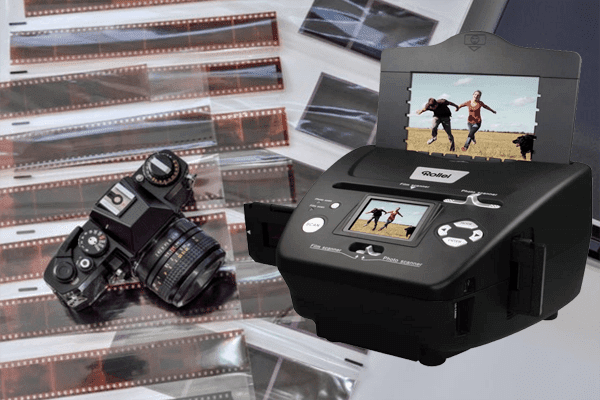
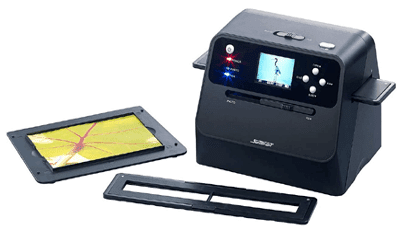

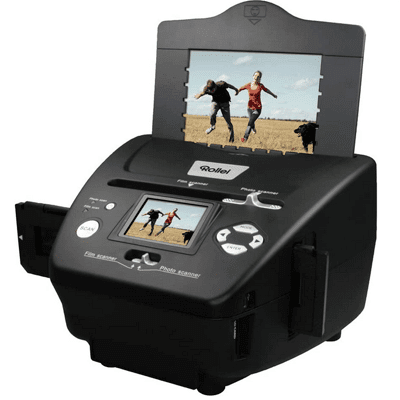

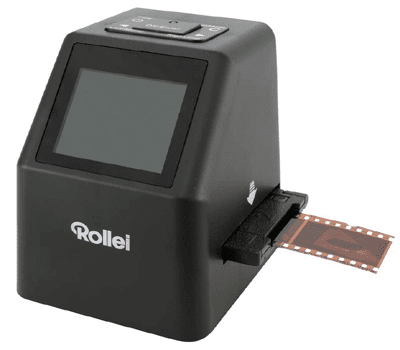


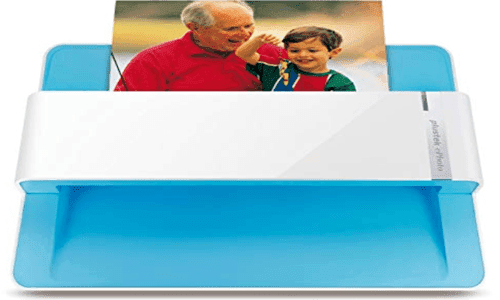

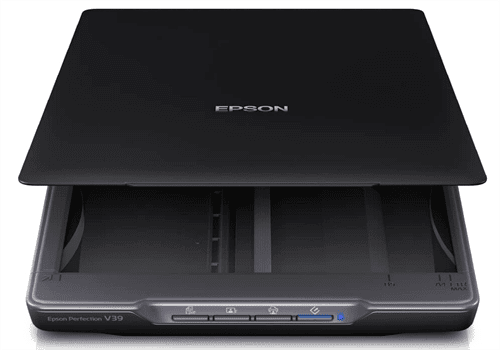
Post a Comment for "7 Best Photo Scanner To Digital"